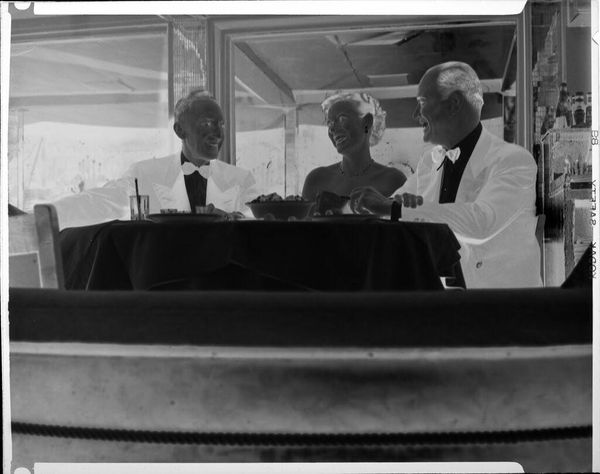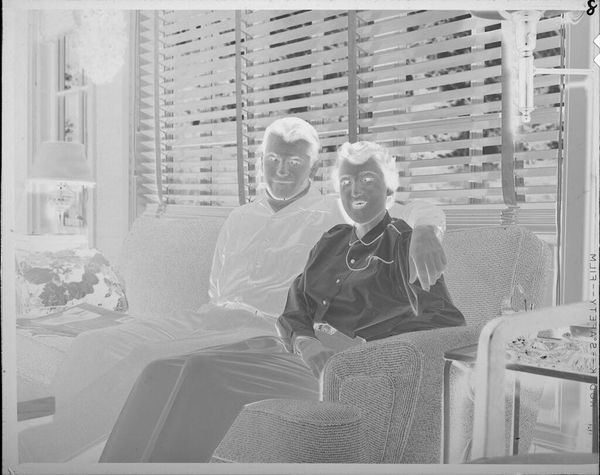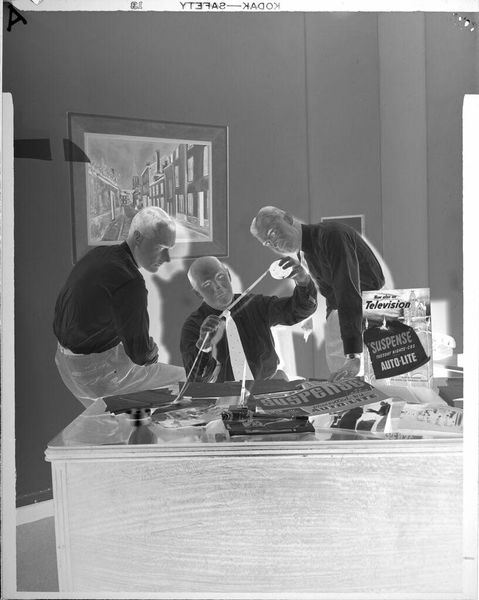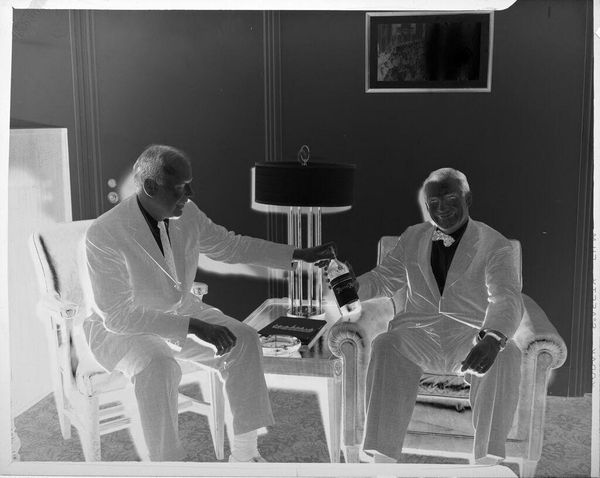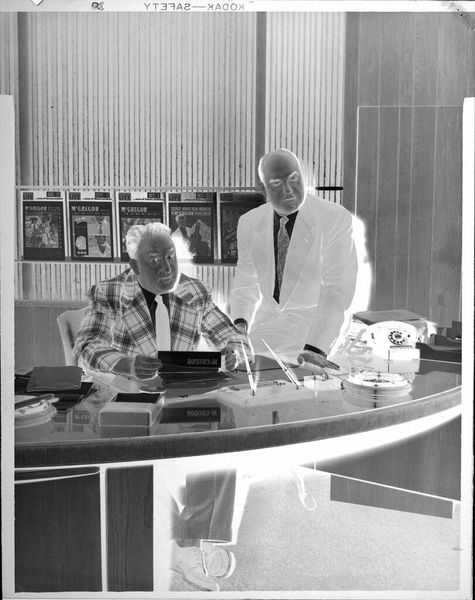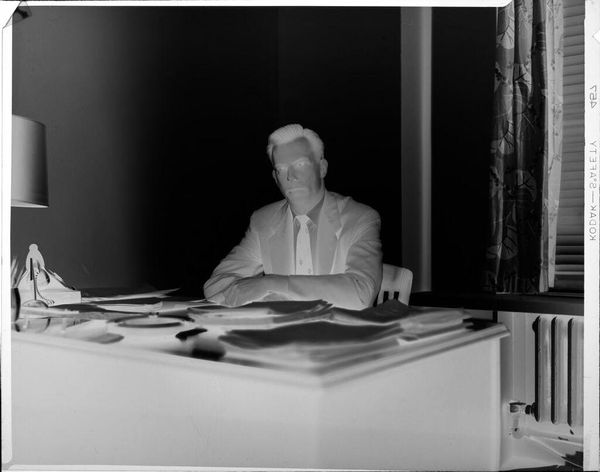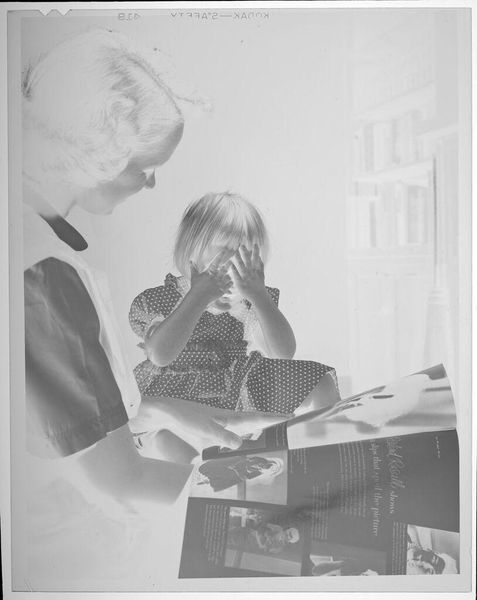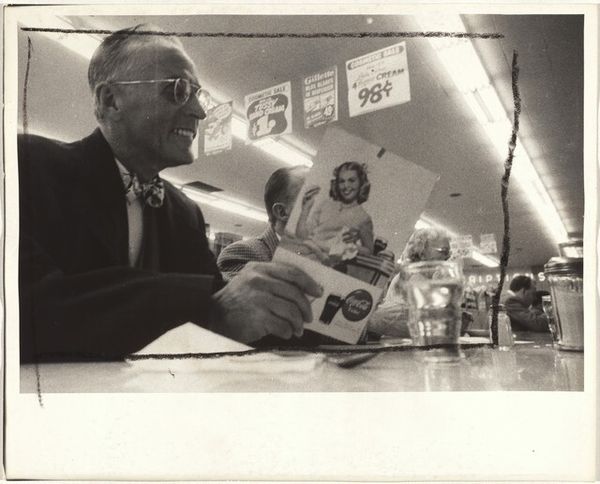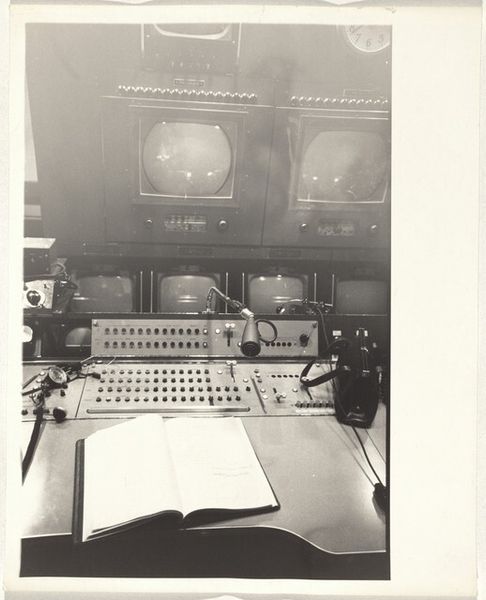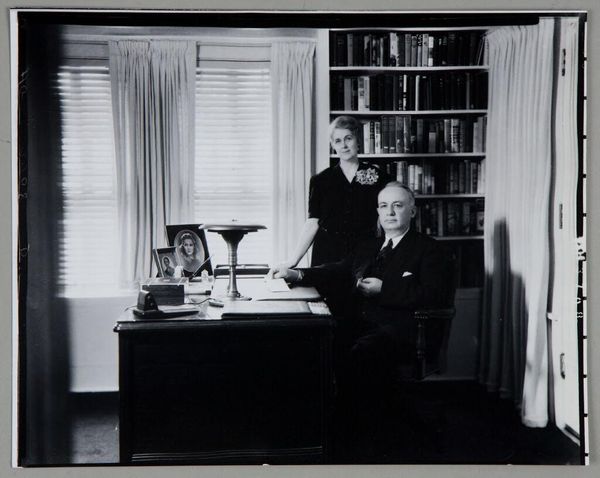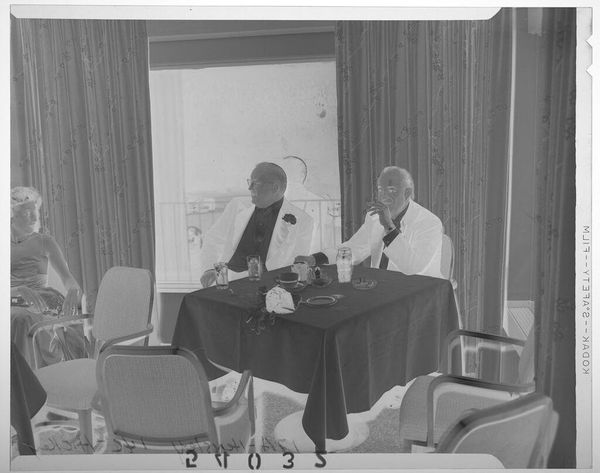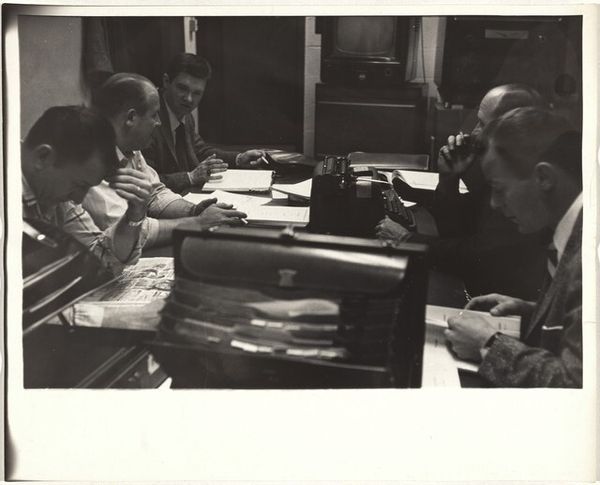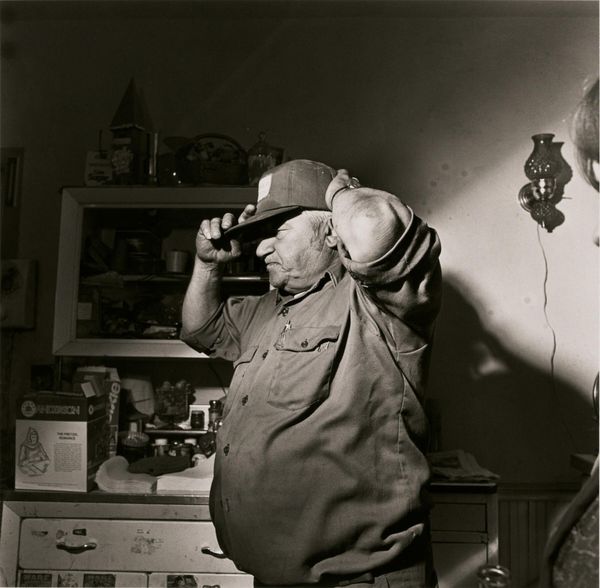
photography
#
portrait
#
still-life-photography
#
film photography
#
black and white photography
#
archive photography
#
photography
#
historical photography
#
couple photography
#
monochrome photography
#
monochrome
#
monochrome
Dimensions: image: 33.7 × 45.7 cm (13 1/4 × 18 in.) sheet: 40.4 × 50.8 cm (15 7/8 × 20 in.)
Copyright: National Gallery of Art: CC0 1.0
Editor: We're looking at "Phyllis Lyon and Del Martin," a 1993 black and white photograph by Nancy Andrews. There's such a feeling of warmth and intimacy in this image. What jumps out at you, and how do you interpret this work? Curator: What I immediately notice is the power of visibility. This image, taken in 1993, depicts two women, Phyllis Lyon and Del Martin, in their domestic space, interacting with a cat at the table between them. We must understand this image in the context of LGBTQ+ rights and representation, where their choice to be visible challenged dominant heteronormative narratives. Editor: So the seemingly simple act of documenting their lives together was in itself a form of protest? Curator: Exactly. Andrews, as the photographer, played a key role. She used photography as a tool for activism, immortalizing Lyon and Martin’s normalcy, showcasing the love, partnership, and everyday life of a lesbian couple. How does that change how you see the composition? The black and white tones, the domestic setting—what do they convey now? Editor: It almost feels like it's neutralizing or universalizing the image, highlighting the commonality of their relationship, taking the spotlight off of them being a queer couple, to underscore their love as people. Did Andrews do other portraits? Curator: Yes, she did. She dedicated a large portion of her career capturing individuals and communities that often existed on the margins. She focused her lens on LGBTQ+ individuals, women, and other activists to bring their experience to the forefront. Editor: This gives me a totally new perspective on the work, realizing that it’s not *just* a snapshot, it's a historical document and a form of resistance. Curator: Absolutely. It speaks to the power of art in shaping social change and documenting histories that are often erased.
Comments
No comments
Be the first to comment and join the conversation on the ultimate creative platform.
